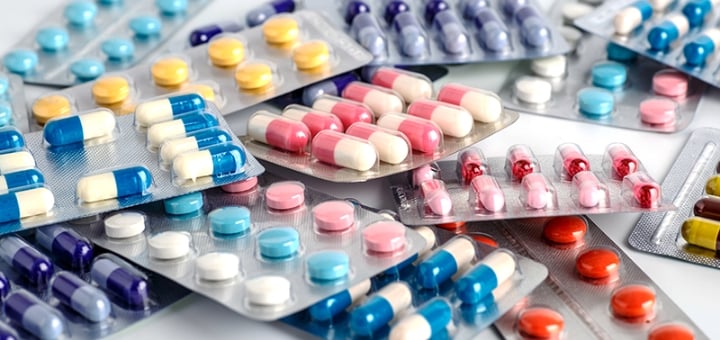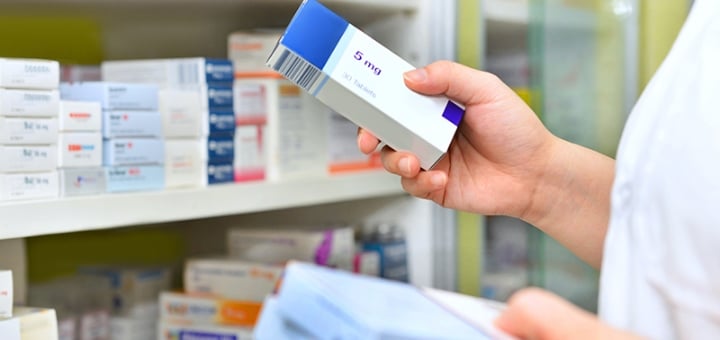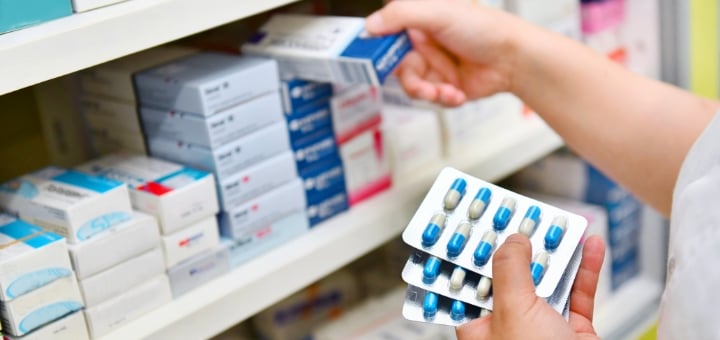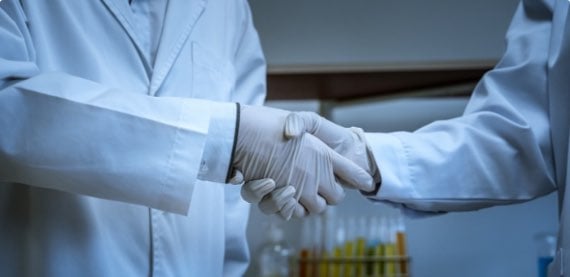Article Contents

What Is Primary Packaging?
Primary packaging is the first and most critical layer of protection in pharmaceutical packaging. It is the material that directly interacts with the medication, and its principal role is to preserve the medication's quality, potency and sterility. This direct contact demands stringent material selection and design to prevent any chemical interaction with the medication. Pharmaceutical packaging requirements are rigorous, and primary packaging must comply with these to ensure patient safety. The design of primary packaging also takes into account ease of use, ensuring that patients can conveniently access and administer their medications while still maintaining safety and compliance.
Types of Primary Packaging for Pharmaceuticals
Pharmaceutical primary packaging serves an essential role in safeguarding and preserving medications. It is tailored to meet specific pharmaceutical packaging requirements, considering factors like protection, dosing and patient convenience.
- Oral Solid Dose: Blister packs and blister packaging protect tablets and capsules from moisture, gases and light.
- Liquids (during manufacturing): Vials, ampules, bioprocess containers and bottles are utilized for liquids at various stages of manufacturing.
- Liquids (after fill/finish): Vials, syringes, and dropper bottles are commonly employed for liquid medications post-fill/finish processes.
- Powders: Sachets are designed to provide accurate and easy access to the powdered medication, making it simple for patients to measure and administer the correct dosage. This can enhance patient compliance and safety, ensuring that individuals receive the right amount of medication as prescribed.
Primary packaging materials include glass, plastic and metal. Glass containers are preferred for their chemical inertness, while plastic bottles and containers offer flexibility, lightness and cost-effectiveness. Metals like steel, aluminum and tin-plated steel can be used for creams, ointments and gels due to their low reactivity.
What is Secondary Packaging?
Secondary packaging is the external layer that encases primary packaging. It serves several key functions:
- Provides additional protection to the medications
- Facilitates easier handling and distribution
- Offers space for branding and product information
Secondary packaging typically includes boxes, cartons and labels. While it doesn't come in direct contact with the medication, its design and materials are crucial for ensuring product integrity during transportation and storage. It also plays a significant role in patient communication, displaying essential information like usage instructions, ingredients and expiration dates.
Primary Packaging Regulations
Primary packaging regulations ensure that the packaging is tailored to its intended purpose and complies with FDA requirements. This means it is specifically designed with the medication in mind to guarantee the safety of both the product and the patient.
For instance, blister packaging serves a dual purpose: it offers a suitable material for safeguarding tablets and is designed with the ease of tablet administration in mind. Patients can easily access the precise medication dose by piercing an individual blister segment.
Secondary Packaging Regulations
Secondary packaging in the pharmaceutical industry is regulated by various national and international regulatory bodies. These organizations set standards and guidelines to ensure that pharma secondary packaging is safe and secure and provides the necessary information to healthcare providers and patients. They focus on aspects like labeling, tamper-evidence, poison prevention and environmental considerations to maintain the overall quality and safety of pharmaceutical products.
What Are the Requirements for Secondary Packaging in Pharmaceuticals?
Secondary packaging requirements are governed by strict regulatory standards to ensure safety and efficacy. These standards include:
- Durability: Secondary packaging must withstand transportation and storage conditions without compromising the primary packaging or the medication.
- Labeling: Accurate and clear labeling is mandatory, including drug information, dosage instructions, expiration dates and any necessary warnings.
- Tamper-Evidence: Features to indicate if the secondary packaging has been opened or tampered with are essential for patient safety.
- Environmental Consideration: Packaging materials should be chosen with environmental impact in mind, aiming for sustainability where possible.
These requirements ensure that secondary packaging not only protects the medication but also provides critical information and maintains patient safety throughout the product's lifecycle.

Navigating Primary vs Secondary Packaging for Pharmaceutical Excellence
Effectively balancing primary vs secondary packaging requires consideration of both functional design and marketing strategies. This approach ensures that primary packaging not only protects the medication but also appeals visually, while secondary packaging balances cost-effective shipping with clear patient communication.
Primary packaging directly connects with consumers. It's designed not only to protect the medication but also to engage the user. This layer is essential for keeping the drug safe and ensuring a positive first experience for the consumer. Secondary packaging, although primarily focused on protection, also requires careful design to balance cost-effective logistics and effective patient communication. This layer is responsible for safeguarding the medication during shipping and storage, ensuring its integrity upon arrival. Additionally, secondary packaging plays a vital role in conveying essential information to patients, including usage instructions, ingredients and safety warnings. Achieving this delicate balance of primary and secondary packaging between protection and appeal is essential for upholding medication quality and providing patients with clear, concise usage guidance. UPM Pharmaceuticals excels in aligning the requirements of primary packaging vs secondary packaging while developing packaging solutions that prioritize both safety and marketability, thus optimizing the synergy between primary and secondary packaging requirements.
Why Choose UPM Pharmaceuticals for Primary and Secondary Packaging
When it comes to primary and secondary packaging solutions, UPM Pharmaceuticals stands out as the ideal partner. Our commitment to excellence and innovation in pharmaceutical packaging is underscored by our state-of-the-art 475,000-square-foot facility in Bristol, Tennessee. Here's why you should choose UPM Pharmaceuticals:
- Tailored Packaging Solutions: Our expertise in the packaging of pharmaceutical products ensures that your specific project requirements are met with precision. We understand that one size doesn't fit all, and we excel in providing solutions tailored to your unique needs.
- Experienced Leaders in Pharmaceutical Packaging: With extensive experience in primary and secondary packaging, we are well-equipped to meet the highest industry standards.
- Technology and Personalization: At UPM Pharmaceuticals, we combine cutting-edge technology with the personalized approach of a family-owned company. This blend guarantees quality, reliability and efficiency in our packaging and warehousing services.
Choosing UPM Pharmaceuticals means forging a partnership dedicated to aligning with your commercial objectives and driving your pharmaceutical products toward market success. Our commitment to quality, innovation and compliance ensures that your primary and secondary packaging needs are in capable hands.
Serialization and Aggregation in Pharmaceutical Packaging
Serialization and aggregation integrate seamlessly into pharmaceutical packaging processes, enhancing both primary and secondary packaging operations.
In primary packaging, serialization involves the unique labeling of individual drug units, such as bottles or blister packs, with distinctive codes. These codes, often in the form of barcodes or QR codes, are generated and applied at the unit level. The serialization process ensures that each medication unit is identifiable and traceable throughout its lifecycle.
When it comes to secondary packaging, aggregation builds upon serialization by grouping serialized units into larger packaging units, like boxes or cartons. These larger units also receive their own unique codes, which link back to the serialized data of the individual drug units contained within. This hierarchical approach allows for efficient tracking and tracing at multiple packaging levels.
The integration of serialization and aggregation into pharmaceutical packaging enhances safety, quality assurance and regulatory compliance at both the primary and secondary packaging stages.
CONTACT US
Optimize Your Pharmaceutical Packaging with UPM
Ready to maximize the potential of your primary and secondary packaging? Understanding the nuances of primary packaging vs secondary packaging is the first step in achieving efficient, cost-effective and compliant pharmaceutical packaging. With our cutting-edge technology and extensive industry knowledge, we provide exceptional primary and secondary packaging solutions for all sizes of product runs. Get in touch with us today to advance your packaging solutions. Take a virtual tour of our facility or contact us to get started.
Schedule a TourFAQs About Primary Packaging Vs Secondary Packaging
Discover expert insights on pharmaceutical packaging in these frequently asked questions about the nuances of primary packaging vs secondary packaging.
Is a Label Primary or Secondary Packaging?
A label is considered part of secondary packaging. Whether they are attached to the outside of the primary pharmaceutical packaging or directly to the secondary packaging, labels provide essential information like drug name, dosage and instructions.
How Does Primary Packaging Protect Medications?
When it comes to the packaging of pharmaceutical products, primary packaging plays an important role in safeguarding medications. Primary pharmaceutical packaging acts as the initial barrier, shielding medications from environmental factors, potential contamination and physical damage. This ensures the safety and effectiveness of the medication for patients' use.
Primary packaging forms the first line of defense against external influences. It not only maintains the product's integrity but also assures patients and healthcare providers of its reliability. By effectively preventing exposure to harmful elements, primary packaging ensures that medications remain potent and ready for use when needed.
Can Secondary Packaging Affect Drug Stability?
When considering the relationship between primary packaging vs secondary packaging, it's important to understand that while secondary packaging may not directly influence drug stability, it serves as a critical safeguard for the primary packaging and its contents. This ensures that external factors, which could indirectly affect the medication's stability, are mitigated.
Secondary packaging serves as a protective barrier, preserving the integrity of the primary packaging from environmental variables and potential damage during storage and transportation. By doing so, secondary packaging indirectly contributes to maintaining drug stability, ensuring that the medication remains in optimal condition until it reaches the end user.
Pharmaceutical packaging requirements underscore the need for a comprehensive approach that encompasses both primary and secondary packaging to meet safety and regulatory standards. While secondary packaging may not directly impact drug stability, its role in preserving the integrity of the primary packaging aligns with the broader requirements of pharmaceutical packaging.
Related Articles: Primary Packaging Vs Secondary Packaging
Explore the articles below to learn more about primary packaging vs secondary packaging, the latest trends and regulatory insights.

